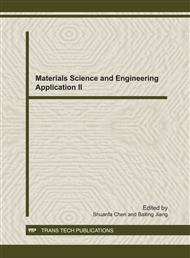p.336
p.341
p.347
p.351
p.355
p.361
p.367
p.371
p.375
The Analysis on Track-Memory of Omnidirectional Fire Robot
Abstract:
The track-memory of omnidirectional fire robot is so useful in locating the robot in fire scene, ultrasonic location nor map-matching nor other methods in self-orientation are not suitable for fire robot because of the precision requirement and response speed, in this paper, a simplified method based on inertial measurement unit (IMU) is proposed, in this method the position of robot is calculated by the acceleration and angular velocity , and iterative equation is derived , as the omnidirectional fire robot is always used as a translational device, the rotations of the robot in triaxial-axis are zero, a more practical algorithm based on the triaxial accelerometer is established. A fire robot model has been set up, experiment both with smoothing curve path and un-smoothing curve path have been made, , the trajectorys are iteratived by the practical algorithm, the experimental results demonstrated the practicability and accuracy of the new simplified method.
Info:
Periodical:
Pages:
355-360
Citation:
Online since:
December 2011
Authors:
Price:
Сopyright:
© 2012 Trans Tech Publications Ltd. All Rights Reserved
Share:
Citation:


